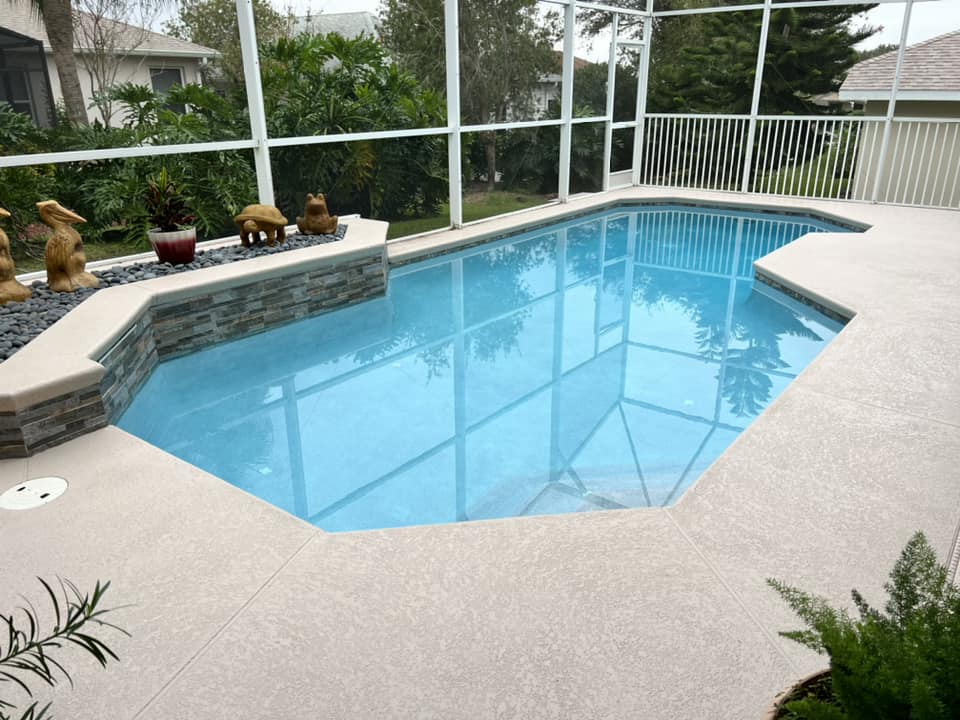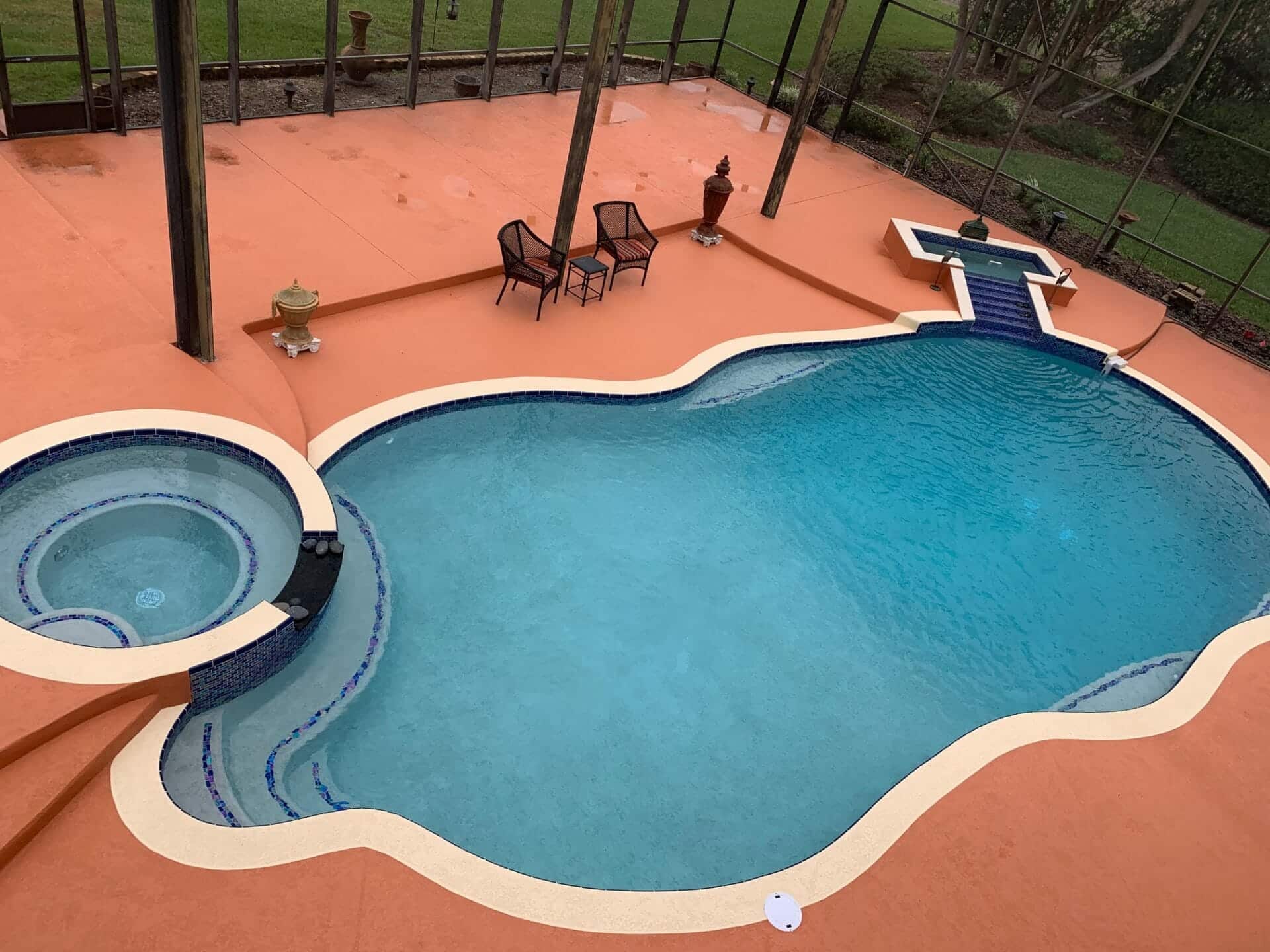Pools are fantastic additions to any home, offering a refreshing escape from the heat and a fun space for family and friends. However, when your pool needs repairs, particularly for patches, it doesn’t mean you have to drain it. Today, we’re exploring how patching a pool can be done effectively even when it’s full, ensuring minimal disruption to your swimming schedule.
Understanding Pool Patching
When we talk about patching a pool, we mean fixing minor damages that don’t require a complete overhaul. This can include addressing issues like small leaks, cracks, or surface deterioration.
What Is Pool Patching?
- Direct Application: Special underwater adhesives are used to apply patches directly to the affected area.
- Flexibility: These patches can flex and move with the pool’s surface, ensuring a long-lasting repair.
- Speed: Most patching jobs can be completed in a few hours.
Common Pool Patching Materials
| Material | Characteristics | Durability |
|---|---|---|
| Vinyl | Flexible and waterproof | High |
| Epoxy | Strong bond, chemical resistant | Very High |
| Rubber | Easy application, flexible | Moderate |
Step-by-Step Guide to Patching a Pool
Patching a pool involves several clear steps to ensure the repair is effective and lasts. Below is a detailed guide on how to achieve this.
- Identify the Damage: Locate the areas that need repair.
- Clean the Area: Thoroughly clean around the damage to ensure the patch adheres well.
- Apply the Patch: Use a waterproof adhesive to apply the patch material.
- Cure the Patch: Allow adequate time for the patch to bond and cure underwater.
Patching Tools and Their Uses
| Tool | Purpose |
|---|---|
| Patching Kit | It contains all the necessary materials and tools |
| Scraper | For cleaning the damaged area |
| Adhesive Spreader | To evenly apply the adhesive |
Benefits of Patching Without Draining
Patching your pool without draining it offers several advantages:
- Conservation of Water: Saves large amounts of water that would otherwise be wasted.
- Cost-Effective: Reduces the costs associated with refilling the pool.
- Time-Saving: Eliminates the downtime of draining and refilling.
Challenges and Solutions
While patching a pool without draining is beneficial, it comes with challenges.
Challenges and Solutions in Pool Patching
| Challenge | Solution |
|---|---|
| Hard to locate leaks | Use dye tests to identify leak sources |
| Underwater application difficulty | Employ skilled professionals with the right tools |
Maintenance Tips Post-Patching
After successfully patching your pool, maintaining its condition is crucial to prevent future issues and extend the life of the repair. Here are some tips to keep your pool in great shape:
Regular Monitoring
- Inspect Regularly: Regularly check the patched areas to ensure they remain sealed and intact.
- Water Chemistry: Maintain proper chemical levels to prevent the patch material from degrading.
Proper Filtration
- Clean Filters: Ensure your pool’s filtration system is clean and functional, reducing debris that could affect the patched area.
Professional Assessment
- Annual Checkups: Consider having a professional inspect your pool annually to identify any potential issues early.
Maintenance Checklist Post-Patching
| Task | Frequency |
|---|---|
| Inspect Patches | Monthly |
| Check Water Chemistry | Weekly |
| Clean Filters | As recommended by the manufacturer |
| Professional Inspection | Yearly |
Long-Term Care Strategies
Ensuring the longevity of your pool after patching involves strategic care and preventive measures. Here are some strategies to consider:
- Avoid Harsh Chemicals: Use pool chemicals judiciously to avoid damaging the patch material.
- Use Pool Covers: Protect your pool from debris and reduce evaporation, which can affect water balance.
- Educate Users: Inform all pool users about the importance of avoiding rough play near patched areas to prevent damage.
Interactive Conclusion: Your Pool Patching Questions Answered
As we wrap up this comprehensive guide on patching a pool, let’s address some common questions to clarify any remaining doubts and ensure you’re fully equipped to handle your pool maintenance.
Preventive Measures for Pool Longevity
Preventive care is key to maintaining the structural integrity and aesthetic appeal of your pool post-patching. Here are some effective strategies:
Regular Surface Treatments
- Sealant Application: Apply a UV-resistant sealant to protect patched areas from sun damage.
- Anti-Algae Treatments: Use algae-preventive chemicals periodically to keep the pool surfaces clean and intact.
Strategic Upgrades
- Upgrade to Energy-Efficient Pumps: This reduces strain on pool systems and maintains better water circulation, preventing undue stress on patched areas.
- Install a Robotic Pool Cleaner: Automate the cleaning process to maintain cleanliness without manual scrubbing, which can disturb patched sections.
Latest Trends in Pool Maintenance Technology
Staying updated with the latest advancements can significantly improve the effectiveness of maintaining your patched pool. Here are some cutting-edge technologies that are reshaping pool care:
Smart Pool Monitoring Systems
- Wireless Sensors: Install sensors that monitor water chemistry and temperature, sending alerts to your smartphone for any irregularities.
- Automated Dosage Systems: These systems automatically adjust chemical levels, ensuring a balanced pool environment, which is crucial for the longevity of patches.
Eco-Friendly Pool Solutions
- Solar Pool Covers: Utilize solar energy to maintain water temperature and reduce evaporation, which helps maintain the chemical balance.
- Saltwater Systems: Consider switching to a saltwater system, which requires less reliance on harsh chemicals, is better for the environment, and is gentle on repairs.
Comparison of Traditional vs. Smart Pool Maintenance Technologies
| Feature | Traditional Maintenance | Smart Technology |
|---|---|---|
| Chemical Balancing | Manual testing and adjustment | Automated, real-time adjustments |
| Cleaning | Manual or basic automated tools | Advanced robotic cleaners |
| Monitoring | Periodic professional check-ups | Continuous, automated monitoring |
Interactive Conclusion: Engage with Your Pool Care
As we conclude this detailed exploration into maintaining a patched pool, let’s engage further with some interactive content that can help you apply these concepts to your pool care routine.
Test Your Pool Patching Knowledge
- Question 1: What is the primary reason for using a UV-resistant sealant on patched areas?
- A) To improve appearance
- B) To protect against sun damage
- C) To increase water temperature
- Question 2: Which technology helps in the real-time chemical balancing of your pool?
- A) Solar pool covers
- B) Smart monitoring systems
- C) Robotic pool cleaners
Takeaway Tip: Regularly updating your pool maintenance technology not only enhances the ease of care but also extends the life of your pool repairs. Embrace these advancements to ensure your pool remains a pristine oasis.
By following these guidelines and integrating modern technologies into your pool maintenance regimen, you can effectively manage your pool post-patching, ensuring it remains in excellent condition for years to come. Don’t hesitate to incorporate these tips and technologies to transform your pool care practices into a more efficient, enjoyable, and sustainable routine.
FAQs
- How long does it take for a pool patch to dry?
- Typically, it takes 24-48 hours for a pool patch to cure underwater fully.
- Can all types of pools be patched without draining?
- Yes, most pool types, including vinyl, fiberglass, and concrete, can be patched without draining.
- Is patching a permanent solution?
- While patching is durable, it is not always permanent. Regular inspections are recommended.
- What is the best season to patch a pool?
- Spring or early summer are ideal, as warmer temperatures help the adhesive cure better.
- Can I patch a pool by myself, or should I hire a professional?
- Simple patches can be a DIY project with the right tools and materials. However, for larger or more complex issues, hiring a professional is recommended.
- How do I prevent future cracks and leaks in my pool?
- Regular maintenance, careful chemical management, and avoiding physical damage are key to preventing future issues.
- What are the signs that a patch is failing?
- Peeling edges, bubbling, or the recurrence of leaks around the patched area indicate a need for a reevaluation.






